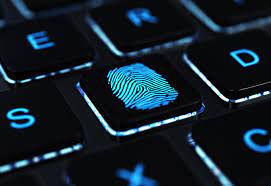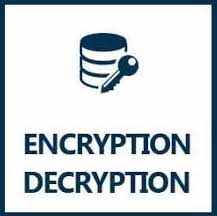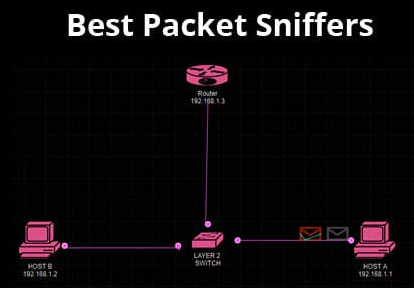
Keylogger
What Is a Keylogger?
Keyloggers or keystroke loggers are software programs or hardware devices that track the activities
(keys pressed) of a keyboard. Keyloggers are a form of spyware where users are unaware their actions
are being tracked. Keyloggers can be used for a variety of purposes; hackers may use them to
maliciously gain access to your private information, while employers might use them to monitor
employee activities. Some keyloggers can also capture your screen at random intervals; these are
known as screen recorders. Keylogger software typically stores your keystrokes in a small file,
which is either accessed later or automatically emailed to the person monitoring your actions.

Text Encryption-Decryption (Cipher)
Encryption is the process by which a readable message is converted to an unreadable form to prevent
unauthorized parties from reading it. Decryption is the process of converting an encrypted message
back to its original (readable) format. The original message is called the plaintext message. The
encrypted message is called the ciphertext message.
Digital encryption algorithms work by manipulating the digital content of a plaintext message
mathematically, using an encryption algorithm and a digital key to produce a ciphertext version of
the message. The sender and recipient can communicate securely if the sender and recipient are the
only ones who know the key.

Reverse Shell
There are many ways to gain control over a compromised system. A common practice is to gain
interactive shell access, which enables you to try to gain complete control of the operating system.
However, most basic firewalls block direct remote connections. One of the methods to bypass this is
to use reverse shells.
A reverse shell is a program that executes local cmd.exe (for Windows) or bash/zsh (for Unix-like)
commands and sends the output to a remote machine. With a reverse shell, the target machine
initiates the connection to the attacker machine, and the attacker's machine listens for incoming
connections on a specified port; this will bypass firewalls.

MAC Address Changer (For Linux OS only)
In a computer network, the MAC Address is used at the lowest networking level,where network
interfaces
communicate with one another.
Need of changing MAC Address:
to bypass MAC Address filtering,
to bypass certain kind of MITM spoofing attack,
to avoid device tracking in a public network.
There are many other tasks like becoming anonymous in a network and to avoid some network attacks
where changing MAC Address becomes useful.

Image Steganography
Steganography is the art of hiding a message inside another message. In this case we will hide a
text message inside an image. An image will most propably go unnotified, not a bunch of people will
suspect a message hidden inside an image. Steganography is no means of encryption, just a way of
hiding data inside an image.

Cyber Attact Impact Assessment
Tools such as anti-virus software, biometrics and personal
devices, e.g., the secure chip in a credit card or an ePassport
are digital security devices because they offer freedom to
communicate, work, travel and shop using your digital
identity in a way that is secure.
Digital security is an all-encompassing term, which includes
the tools to secure technology, assets and personal identity in
the online and mobile world.

ARP SPOOFING
ARP spoofing is a type of Man-in-the-Middle (MitM) attack that can be carried out using an ARP spoofer tool. ARP is a protocol used in networks to map an IP address to a MAC address. ARP spoofing involves sending fake ARP messages to other devices on the network, which tricks them into sending traffic to the attacker instead of the intended destination. This allows the attacker to intercept and modify the traffic for malicious purposes, such as stealing sensitive information like login credentials.
Using an ARP spoofer tool requires the attacker to have access to the network and the ability to send ARP packets. The tool can be used to send fake ARP messages to other devices on the network, allowing the attacker to intercept and redirect network traffic.
It is important to note that ARP spoofing is a malicious activity and is illegal in most jurisdictions without proper authorization and legal permission.

DNS SPOOFER
A DNS spoofer is a tool used to perform DNS spoofing attacks. DNS spoofing, also known as DNS cache poisoning, involves modifying the DNS records of a website to redirect traffic to a fraudulent website that looks similar to the intended destination.
To use a DNS spoofer, the attacker typically intercepts and modifies the network traffic of the victim. This can be done by creating a Man-in-the-Middle (MITM) attack with the help of a tool like Scapy for ARP spoofing, and then reading the network traffic with a packet sniffing tool. Once the traffic is intercepted, the attacker can modify the DNS records to redirect the traffic to a malicious website.
It is important to note that DNS spoofing is a malicious activity and should not be used without proper authorization and legal permission. It is important to use such tools responsibly and only for educational or ethical purposes.
.jpeg)
Password Generator
The password generator is a tool that allows users to create strong, unique passwords that are difficult for hackers to guess or crack. The generator typically asks the user to input a keyword and select various options, such as the desired length of the password and whether to include uppercase and lowercase letters, numbers, and symbols. Some generators also offer the option to exclude similar-looking characters, which can make passwords easier to type and remember.

PACKET SNIFFER
A packet sniffer, also known as a network analyzer or protocol analyzer, is a tool used to capture and analyze network traffic. It allows the user to view the data being transmitted on a network and analyze the packets for information such as source and destination addresses, protocol information, and data content.
To use a packet sniffer, the user needs to have access to the network and the ability to capture packets. The user can then use a tool such as Wireshark to filter and analyze the captured packets. The tool can be used to identify network problems, troubleshoot network issues, and analyze network performance.

NETWORK SCANNER
A network scanner is a tool used to scan and discover devices connected to a network. It allows network administrators to identify all the devices connected to a network and collect information such as IP and MAC addresses, open ports, and operating systems.
The information collected by a network scanner can be used to identify potential security vulnerabilities and to monitor network activity. It can also be used to troubleshoot network issues and optimize network performance.
NETWORK SCANNER
If you need any kind of help regarding Cyber Security, Kindly
Click Here








.jpeg)

